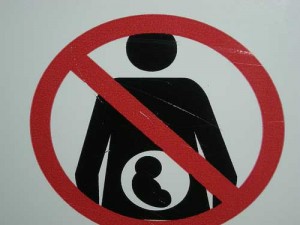 [1]The recent report [2] by transhumanist Zoltan Istvan that scientists are well on their way to successfully creating artificial wombs has caused a stir in a number of circles.
[1]The recent report [2] by transhumanist Zoltan Istvan that scientists are well on their way to successfully creating artificial wombs has caused a stir in a number of circles.
Ectogenesis, the scientific name for the process, was once merely a product of fiction. For most of us, however, the reality of artificial wombs is something we can expect to witness in our lifetimes.
The mechanics of ectogenesis, despite being technically advanced, are actually fairly straightforward to understand. Istvan describes the process as:
an amniotic fluid-filled aquarium with a bunch of feeding tubes and monitoring cables attached to a live, developing organism. Those tubes bring the nutrients, oxygen, etc needed to grow an organism and help it survive; the cables monitor everything going on inside the tank. There’s certainly a Matrix feel to it all.
What’s more complicated are its implications.
In a follow-up article [3] at The Daily Beast, Samantha Allen predicts that “The Artificial Womb Will Change Feminism Forever.” Allen explores the various factions within feminism, some of whom oppose artificial wombs in an effort to preserve the link between womanhood and reproduction, and others who support this development as a means of freeing women from the burdens of childbearing and its risks.
She also highlights the “Men’s Rights Activists” who celebrate ectogenesis as a means of evening out what they perceive as the disparities between men and women when it comes to paid maternity leave and being favored in child custody decisions. If this odd mix of allies and opponents sound strange to you, that’s because it is.
What’s telling, however, is that there is one constituency that is neglected in this discussion. If you’ve followed our work or my writings, you can guess where I’m going with all of this: the children. Once again, we are wading into an emerging area of assisted reproduction that is dismissive of the end result of such technologies.
Not once is there mention of the health and emotional benefits of the maternal-child bond. Nor is there any discussion on what these children might think about the commodification of human life that led to their conception. You also won’t find any mention of the real possibility that artificial wombs create a new space for eugenics. And the list goes on.
It seems that the general public is still wary of artificial wombs and what this will mean for the future of family formation. But as we’ve witnessed in our work in third party reproduction, these technologies have outpaced our discussions and debate on these matters.
Might it finally be time to hit the STOP button and survey the damage that’s been done before plowing further ahead? The warning and hazard signs are already there. But it’s hard to tell if anyone is paying attention.
Reprinted with permission by the Center for Bioethics and Culture [4].